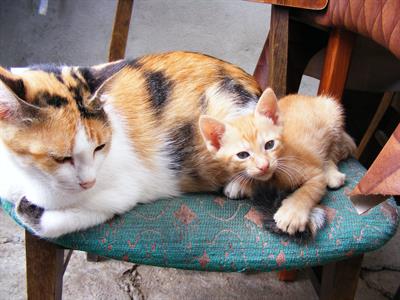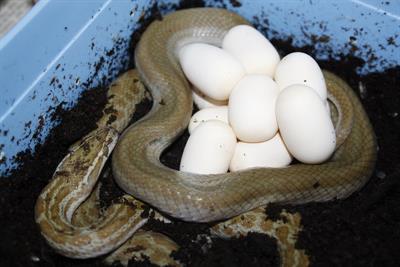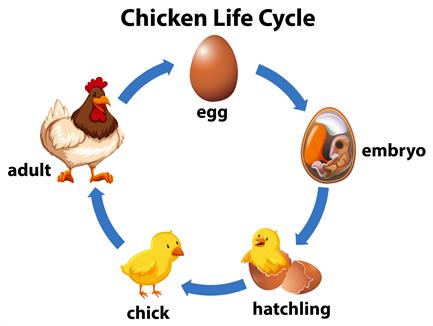PDF chapter test TRY NOW
The animals which gives birth to young ones are known as viviparous animals.
The young ones born are developed inside the uterus of the mother. When the development is fully completed, the mother gives birth to the young one, and the new one will be expelled out of the mother's body.
Example:
Humans, cats, dogs, rabbit, lion, and tiger

Cat with it's kitten - Viviparous animal
The animals which lay eggs from which the new young one are hatched from it are called oviparous animals.
In oviparous animals, the mother lays eggs outside the body, and the young one develops inside the egg. After the complete development of the young one inside the egg, the shell of the egg breaks, and the young one comes out from the egg and they are called hatchlings.
Example:
Hen, sparrow, crow, snake, crocodile, frog, butterfly

A snake with it's eggs - Oviparous animal
Fertilisation in hen:
The fertilisation is internal in hens. After the fertilisation, the zygote repeatedly divides to form the embryo. The embryo then travels to the oviduct. When it travels through the oviduct, protective layers are formed surrounding the embryo.
The hard shell (mainly made up of calcium) that is seen surrounding the hen's egg is the outermost protective layer.
After the formation of a hard eggshell around the developing embryo, the hen lays the egg. The hen incubates the egg to provide sufficient temperature for the embryo to develop in to chick.
After the formation of a hard eggshell around the developing embryo, the hen lays the egg. The hen incubates the egg to provide sufficient temperature for the embryo to develop in to chick.
Embryo takes \(3\) weeks to develop into a chick.
After the development of the chick completely, it breaks open the eggshell and comes out from the egg.

Life cycle of chicken
Reference:
https://www.flickr.com/photos/erikpaterson/5738211234
https://www.pxfuel.com/en/free-photo-jjysm/download
https://www.vecteezy.com/vector-art/295219-science-chicken-life-cycle
